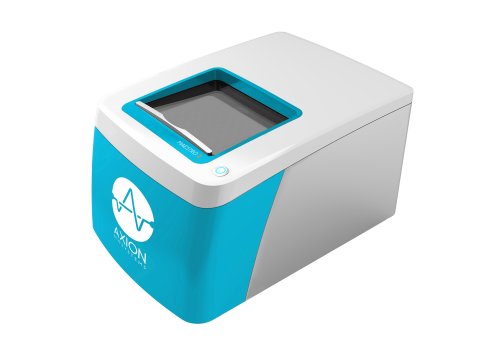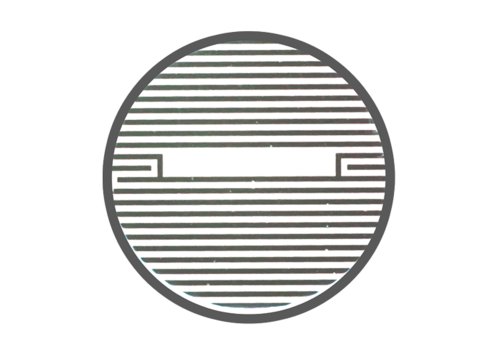Breast cancer is the leading cause of cancer death in women. For breast cancer patients, metastasis, or the spreading of tumor cells to other parts of the body, largely contributes to patient deaths. Modified citrus pectin (MCP) obtained from the peel and pulp of citrus fruits has emerged as a promising anti-metastasis therapy. However, the efficacy of MCP for treating breast cancer cells of varying subtype needs to be better characterized. In this webinar, Dr. Cheryl Gomillion (University of Georgia) discusses how her lab used an impedance-based assay to evaluate the effects of MCP on cell migration through real-time, quantitative monitoring of cell impedance.
Transcript of webinar on Breast Cancer Metastasis Assay using the Maestro Z live-cell analysis system
Thank you for joining for today's Coffee Break Webinar. Today's topic is plant-derived pectin as a promising breast cancer therapy: assessing pectin's effects on metastasis in vitro in real time.
Breast cancer is the leading cause of cancer death in women. For breast cancer patients, metastasis, or the spreading of tumor cells to other parts of the body largely contributes to patient deaths. Inhibition of cancer metastasis will help to increase cancer patient survival rates. Modified citrus pectin, or MCP, is a complex water-soluble indigestible polysaccharide obtained from the peel and pulp of citrus fruits that has emerged as a promising anti-metastasis therapy. However the efficacy of MCP for treating breast cancer cells of varying subtype needs to be better characterized in general.
The metastastic potential of cancer cells in vitro has been commonly evaluated by monitoring cell migration with wound healing assays. The scratch assay measures the migration of cells across a scratch-induced gap in vitro. Imaging and subsequent image analysis are often used for extrapolating data however this approach is highly subjective relies on limited snapshots and time and limits quantification. In this webinar Dr. Cheryl Gomillion discusses how her lab used impedance-based assays as an analytical tool to assess the effects of MCP on cell metastasis through real-time quantitative monitoring of cell impedance.
Dr Cheryl Gomillion is an assistant professor in the School of Chemical Materials and Biomedical Engineering at the University of Georgia. Her long-standing research interests are in tissue engineering and regenerative medicine. In particular, her lab studies the advanced application of tissue engineering strategies for developing in vitro tissue models for studying disease systems such as for cancer.
Thank you for the introduction. The work presented today focuses on evaluating a potential option for treatment of breast cancer which remains the most commonly diagnosed cancer in women and the second leading cause of cancer-related deaths in the United States. It is estimated that more than 276,000 women will be diagnosed with breast cancer in the United States in 2020. Of which more than 42 000 patients will not survive. A large proportion of cancer-related deaths are attributed to metastasis, or spreading of the tumor cells from their primary location in the breast to secondary sites in the body such as the brain, lungs, and bone. Once these cells metastasize the patient's life expectancy in most severe cases is less than 20 months thus necessitating treatment options that may address these cases.
Currently treatment options for breast cancer may include surgery, radiation, hormonal, or chemotherapeutics, or a combination of these approaches, depending on the type and severity of the cancer. Clinically different breast cancer subtypes have been identified and are defined as Luminal A, Luminal B, HER2+ and triple negative breast cancer. These designations are defined based on the presence or lack of receptors found on the surface of cells. As shown here there are two hormonal receptors estrogen and progesterone receptors, and the HER2 protein receptor that are of importance.
Luminal A is defined as either hormone receptor positive and HER2- which is the most common cancer type accounting for 73% of all breast cancer cases. This type of cancer tends to be slower growing, and less aggressive than other subtypes. Luminal B is either hormone receptor positive or HER2+ while HER2+ is positive for the HER2 receptor and negative for the two hormone receptors. Finally in the case of triple negative breast cancer, this type of cancer likes all three receptors which makes treatment of triple negative breast cancer more difficult since targeted therapies are not effective. Triple negative breast cancer also has a higher growth rate is more aggressive and has a higher metastatic potential than other subtypes, thus resulting in worse patient prognosis due to fewer available treatments.
As potential therapeutics have been explored for breast cancer a number of natural compounds have been investigated. Modified citrus pectin, or MCP, for example, has garnered some interest in this case as a potential anti-cancer therapeutic. Pectin is a naturally occurring polysaccharide found in the cell wall of plants including in the pulp and peels of fruits. MCP is obtained from the pulp and peel of citrus fruits, and can be modified by pH, enzyme, or temperature treatment for increased absorption.
Pectin itself has a very complex structure consisting of a few hundred to thousand galactoronic acid monomer units, linked via alpha 1-4 glycosidic bonds forming a linear backbone as shown here. Other functional units can be connected to the backbone and modification via chemical reactions such as esterification or oxidation can result in changes in the patent structure. This complex structure is believed to contribute to the potential anti-cancer properties of MCP.
Studies have shown that the anti-cancer potential of MCP can be characterized as anti-proliferation function where apoptosis may be induced in cell growth limited, or characterized as anti-metastasis function which is the primary interest in our work. Metastasis is a multi-step process and as shown here there are several proposed modes of action where MCP could target or act for cancer treatment. Specifically however MCP is thought to reduce metastatic potential by blocking the galectin-3 pathway which may block the loss of anchorage phase of metastasis which has been explored.
While not comprehensive, the table here summarizes some of the previously reported work to evaluate the anti-cancer properties of various types of plant pectins, including MCP, and also modified pectins from apple and sugar beet. As shown the effects of modified pectins have been investigated for various types of cancer cells with a possible mode of action reported in the case of breast cancer there have been limited studies performed specifically to assess the effects of MCP on metastatic potential of triple negative breast cancer cells which were previously mentioned as being highly aggressive with high risk of metastatic recurrence. Thus we aim to investigate this through our work.
The goal of the reported study was therefore to assess the in vitro effects of pectin on breast cancer cell proliferation and metastatic potential. We first evaluated protocols for pH treatment and heat treatment to prepare modified citrus pectin in-house since their longer term goal was to assess patents-derived from various plant sources and a reliable modification method would be needed. Following this preliminary evaluation we determined that heat treatment was most reliable and reproducible for modification and use the conditions shown here for preparing our MCP in-house. For comparison purposes PectaSol-C, a commercially available dietary supplement was used. This supplement has been reported in various studies as potentially effective for anti-proliferation and having some possible anti-metastasis function for other cancers. So it was included here for comparison to our prepared MCP.
Fourier transform infrared spectroscopy, or FTIR, was performed to characterize the structure of the MCP in comparison to PectaSol-C. And as shown by the spectra here similar peaks indicative of similar functional groups present in both the MCP and PectaSol-C were observed however there were some minor peak differences found which was as expected given that PectaSol-C is a proprietary commercial product that lists other additives and is thus not pure citrus pectin. For cell analysis we selected two breast cancer cell lines MCF-7, a hormone receptor positive line, which has limited metastasis potential, and HCC1806, a triple negative breast cancer cell line, which is more aggressive and invasive. While not shown here, preliminary treatment with MCP showed a reduction in both metabolic activity and cell number when both of these cell types were treated with MCP. So we next evaluated the in vitro metastasis behavior here.
Wound healing, or scratch assays, are commonly used for evaluating metastatic potential in vitro. Specifically for this approach, cells are seated in a monolayer and once the cells reach confluence as shown in panel A, a gap or wound is created, as shown in panel B. Then the culture media is changed to a low serum media to stop cell proliferation. Thus, if cells are able to migrate and close the wound as shown from the transition in panel C to panel D. This is viewed as an observation of the migratory, or metastatic potential.
Video or microscopic images can be captured and subsequently image analysis software can be used for quantification of percent closure or rate of closure. While widely used, however, this method is highly subjective, requires numerous sample replicates, and parameter adjustment for image analysis which can be laborious and result in less accurate analysis since only snapshots and time are captured.
Cellular impedance-based assays offer a sensitive label-free and non-destructive method to continuously monitor cancer cells in real time, allowing assessment of both the kinetics and degree of migration after scratch. To measure impedance small electrical currents are delivered to electrodes embedded in the cell culture substrate as shown in the figure. Before cells are added the electrical current easily passes and the impedance is low.
When cells are present and attached to the substrate covering the electrode they block these electrical currents and are detected as an impedance increase. If a perturbation causes cells to detach or die the impedance then decreases. In this experiment we use the Maestro Z impedance assay to characterize the proliferation and migration of our two breast cancer cell lines. MCF-7 and HCC1806 cells were plated and their impedance was continuously monitored.
Here on the left you can see that each of the cell types exhibited a unique impedance profile over time. Both cell types initially attached and spread resulting in a steady increase in impedance. The HCC1806 cells reached confluence by 60 hours while the MCF-7 cells continue to proliferate for a higher maximum impedance. After 72 hours the cells were switched to a low serum media to transition into a reduced proliferative state. 24 hours later a pipette tip was used to gently scratch away cells in the center of each well creating a gap in the monolayer.
MCP was added to some of the wells to examine potential effects on migration. In the figure on the right you can see the experimental changes reflected in real time in the impedance plot where scratched wells showed a clear reduction in impedance. With the viewing window in each well of the CytoView-Z plates, we were able to visually confirm the scratch that was made for each cell type. Both cell types showed a large consistent gap through the cell monolayer and just after the scratch as shown in figure A and C for the two cell types.
As shown in figures B and D, 24 hours later the MCF-7 cell showed little to no migration but the HCC1806 cells have migrated into the gap making the wound much smaller. In the graph here of the raw data obtained from the Maestro Z, you can again see these stages reflected in real time where the scratch is made for each cell type and then the increase in impedance is observed until the HCC1806 cells reach confluence again with the gap closed and the impedance leveling off. While the MCF-7 cells continue to increase in impedance not fully reaching a confluent state post scratch.
Further comparison of the two cell types post scratch show that the Maestro Z impedance measurements readily detected differences in cell migration and rate of migration post scratch between the two breast cancer cell lines. Both cell types exhibited a large consistent decrease in impedance initially, as a result of the scratch which you can see in the figure here.
The normalized impedance for the MCF-7 cells remain consistently low over 72 hours post scratch suggesting the cells did not migrate into the scratch gap. In contrast the HCC1806 cells showed an increase in impedance over time following the scratch. Normalized impedance returned almost to the unscratched values by 48 hours suggesting significant migration into the scratch gap. These results are consistent with visual inspection and consistent with the greater migration and metastatic potential of triple negative breast cancer cells that is usually observed clinically.
When the wells that were scratched were treated with MCP it was shown that the addition of MCP resulted in a lower impedance than untreated cells which reflects reduced migration into the scratch gap for both cell types. For the HCC1806 cells the in-house MCP was more effective than PectaSol-C at reducing migration as evidenced by a lower impedance from 35 hours after the scratch onward.
In conclusion our preliminary findings indicate the heat treatment improve the anti-proliferation and anti-metastatic potential for citrus pectin which could be a potential important therapeutic option for triple negative breast cancer cells with further evaluation.
In addition the impedance space scratch assay revealed differences in migration, a key factor in metastatic potential across breast cancer lines. With the distinct impedance profiles the HCC1806 cell showed more extensive migration compared to the MCF-7 cells mirroring the greater metastatic potential of triple negative breast cancer cells observed clinically.
Finally, the Maestro Z impedance-based assay was sensitive to small differences in anti-metastatic MCP potencies and dynamics confirming its value for assessing potential anti-metastatic therapies. Currently we are conducting additional studies to confirm the proposed mechanism for anti-proliferation and anti-metastasis activity by investigating galactin-3 expression for these cells when treated with MCP.
In the future we will also explore the anti-cancer potential of pectin derived from other plant sources such as from apple and sugar beet to determine their possible use for therapeutics as well. Finally, more effective modes of delivery for pectin will be studied such as possible controlled release modalities to more effectively deliver potential therapies to cells.
Special thank you to Longjing Zhu, a graduate student from my lab, who conducted much of this work. In addition, special thanks to Jenna Alsaleh from our group, and our various collaborators for technical assistance and sample materials. We are also particularly grateful to our funding sources including, It's The Journey, and the Georgia Research Alliance. Thank you. And that is the conclusion for today's Coffee Break Webinar.
If you have any questions you would like to ask regarding the research presented, or if you are interested in presenting your own research with microelectrode array technology or impedance-based assays, please forward them to coffeebreak axionbio.com For questions submitted for Dr. Gomillion, she will be in touch with you shortly. Thank you for joining in on today's Coffee Break Webinar and we look forward to seeing you again.





